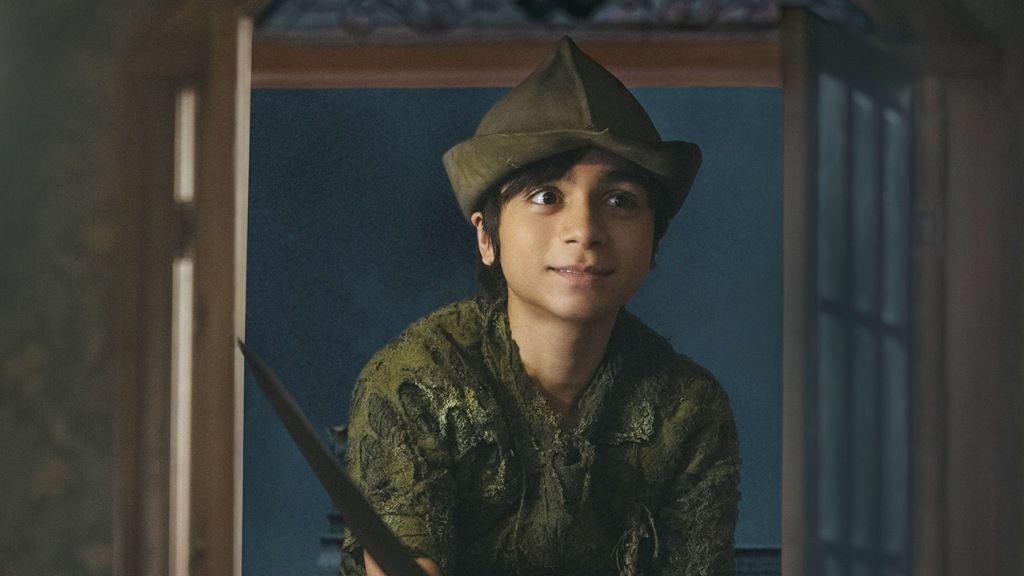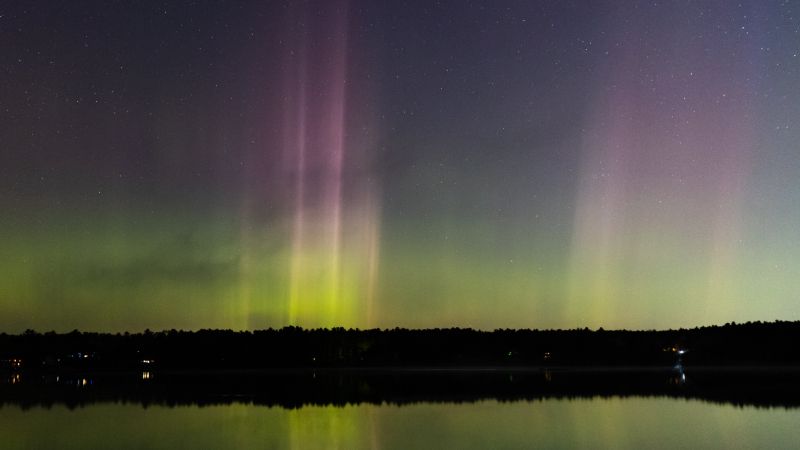The Hollywood Reporter
Peter Pan & Wendy, David Lowery’s humanizing interpretation of J.M. Barrie’s existential classic about the boy who refuses to grow up, speaks more to the inner child of jaded adults than it does to actual kids. This version of the fairytale grounds the fundamental wistfulness of the original tale with empathetic backstories and takes care to remedy the original’s overt racism and latent sexism.
Despite criticisms lodged at Lowery (The Green Knight) in the months leading up to this film’s release on Disney+, Peter Pan & Wendy keeps much intact. Lowery and his co-writer Toby Halbrooks have a firm grasp on the enduring qualities of Barrie’s story, which, as they correctly suggest throughout the film, has nothing to do with whether or not the gang of Lost Boys includes girls. Their rendition teases out the conflicts between Peter and Wendy, diversifies the mythic leader’s ragtag group and develops the indigenous people of Neverland into more realized characters. The duo, who collaborated on Lowery’s previous films, have created a fairytale of the present and for the future.
Peter Pan & Wendy The Bottom Line Less a retelling for kids than for jaded adults. Release date: Friday, April 28
Cast: , Alexander Molony, Ever Anderson,
Director: David Lowery
Screenwriter: David Lowery & Toby Halbrooks
1 hour 46 minutes Friday, April 28 Jude Law , Alexander Molony, Ever Anderson, Yara Shahidi , Alyssa WapanatâhkDavid LoweryDavid Lowery & Toby Halbrooks
Unlike in previous versions of Peter Pan, Lowery doesn’t spend too much time introducing Wendy (Ever Anderson) and her brothers John (Joshua Pickering) and Michael (Jacobi Jupe). There’s an efficient set-up, where we review Wendy’s reluctance to grow up and understand her relationship to her brothers. In one particular moment, the eldest Darling throws John and Michael under the bus to avoid getting into trouble, adding a welcome shade of complexity to her character; Wendy loves her siblings, but she is not above saving herself. Peter Pan (played by newcomer Alexander Molony) still has some edge to him, too. Molony captures his character’s innocence and overconfidence, flipping between the two depending on what the moment calls for.
Lowery’s slender opening — we meet Peter and Tinkerbell (Yara Shahidi), chase the shadow and learn to fly all within the first 15 or 20 minutes — gives him space to flex his own imagination. The four children take off from the Darling home, unbeknownst to Mr. and Mrs. Darling (played by Alan Tudyk and Molly Parker), and see London from a new vantage point. They bounce and swerve across the sky, speeding along the Thames and toward Big Ben. Daniel Hart’s airy scores adds a playful and buoyant touch. It’s a shame that the harsh and dour palette endemic to Disney remakes as of late makes all of this difficult to see.
Things start to brighten up when the crew gets to Neverland, a vast expanse of verdant hills and glistening, azure sea. With the help of DP Bojan Bazelli, Lowery presents this stretch of Peter Pan & Wendy as an operatic ode to freedom and adventure. The camera pans over the ocean, where the mermaids swim in the shallowest part of the water, and the sky, dotted with bulbous clouds and an inverted rainbow. Peter Pan & Wendy is most impressive in these sweeping moments (as well as in the scenes that find Peter showing off his fighting skills) that allow us to sense the director’s enthusiasm in rendering a childhood fantasy and to appreciate Neverland’s grand scale.
That level of excitement ultimately proves to be a double-edged sword. Lowery and Halbrook overstuff the narrative, which begins to wobble and drag under the weight of its obligations. Nevertheless, there are interesting changes and subtle ways the duo correct the original text. Wendy and Tinkerbell, for example, form a fast friendship based on a mutual disdain of Peter’s cockiness and moodiness. Wendy, in particular, tries to point out how much of his success in defeating Hook (played formidably by Jude Law) has to do with his friendships. She wants him to see how often Tinkerbell, the Lost Boys and Tiger Lily (Alyssa Wapanatâhk), one of the indigenous people of Neverland who takes on a more prominent role here, support him.
The relationship between Hook and Peter is also rendered differently, and whether audiences accept it depends on how they interpret the original. Is Peter Pan a children’s story warning kids about the myopia of adulthood? Or is it a story about children that speaks to adults whose imaginations have atrophied? Perhaps it’s both. Lowery’s film tries to play the middle by giving Hook, a character who’s gone from truly evil to comically villainous, a backstory. His relationship with Smee (Jim Gaffigan) and the rest of the pirates on the ship gets fleshed out. We also learn about the history of his connection to Peter, which complicates the legacy of their feud and feels like a message to the adults watching. The tension between them offers a lesson in the loss of one’s inner child and also fosters one of the film’s most poignant scenes.
The strength of that thread — the one between the boy who will never grow up and the pirate who refuses to give up — makes other parts of the narrative feel weaker in comparison. While it’s easy to indulge in the other relationships and enjoy the adventures unfolding beyond them, they don’t carry the same amount of emotional weight. And as the film moves toward its dutiful finish, you may find yourself wondering why Lowery didn’t make a movie about Peter Pan and Hook instead of Peter Pan and Wendy.
Source: Hollywood Reporter


